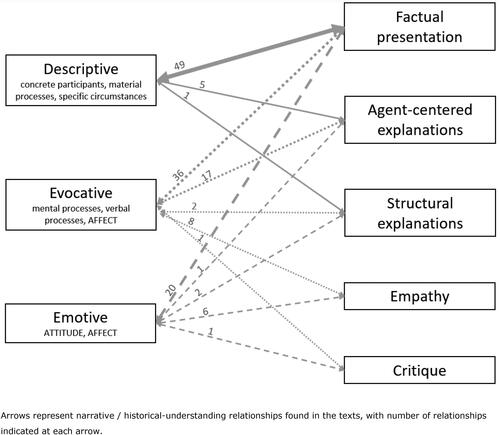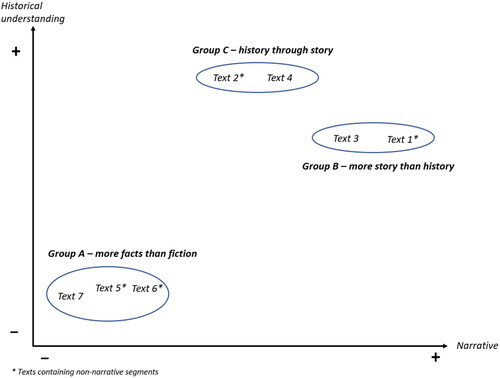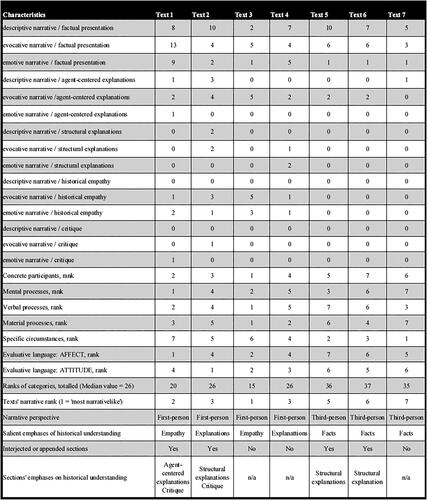Figures & data
Table 1. Texts examined.
Table 2. Historical stance orientations.
Figure 1. Identified relationships between narrative emphases and historical understanding.

Figure 2. Texts grouped by range of narrative execution and historical understanding.

Table 3. Summary of the comparative evaluation of texts.

